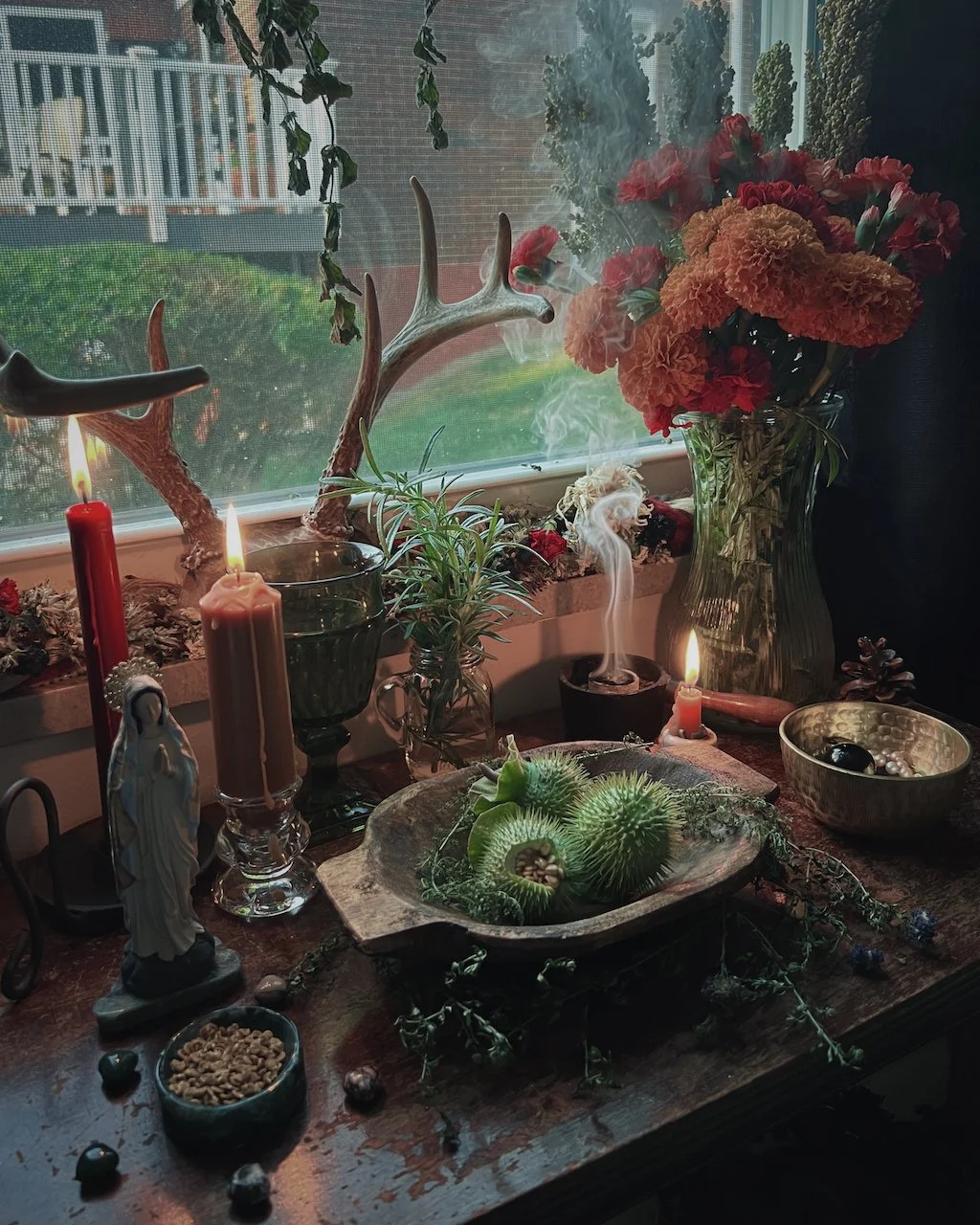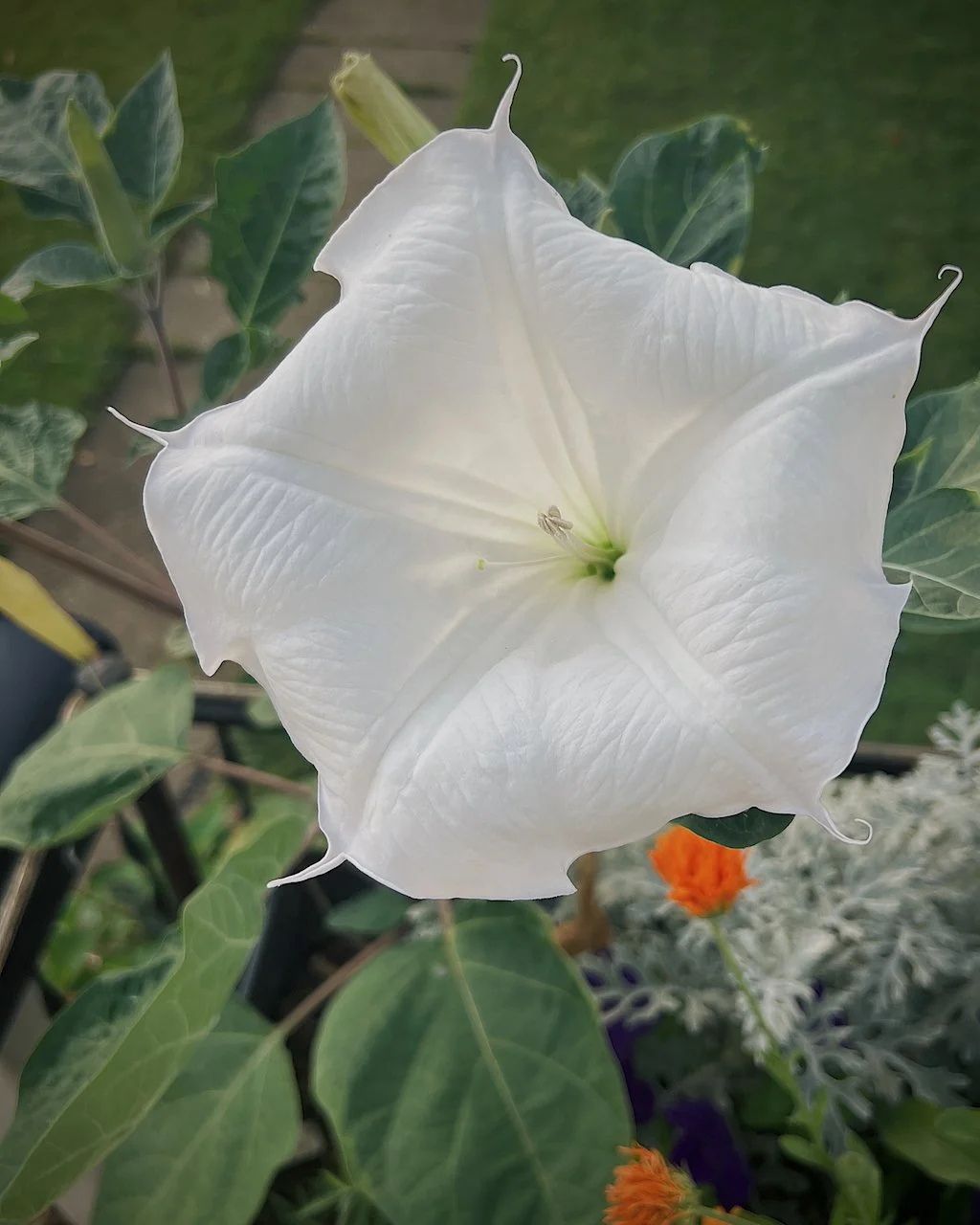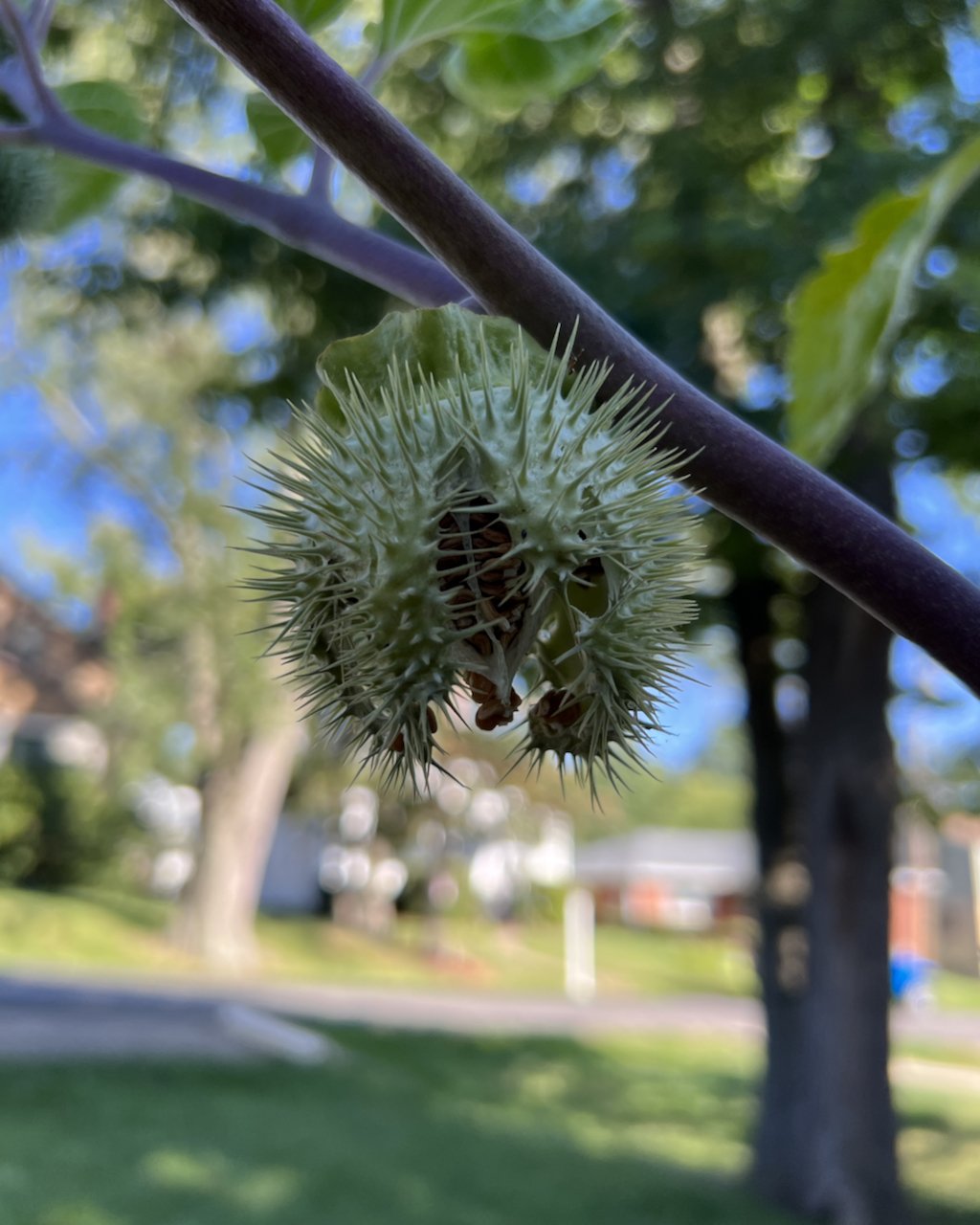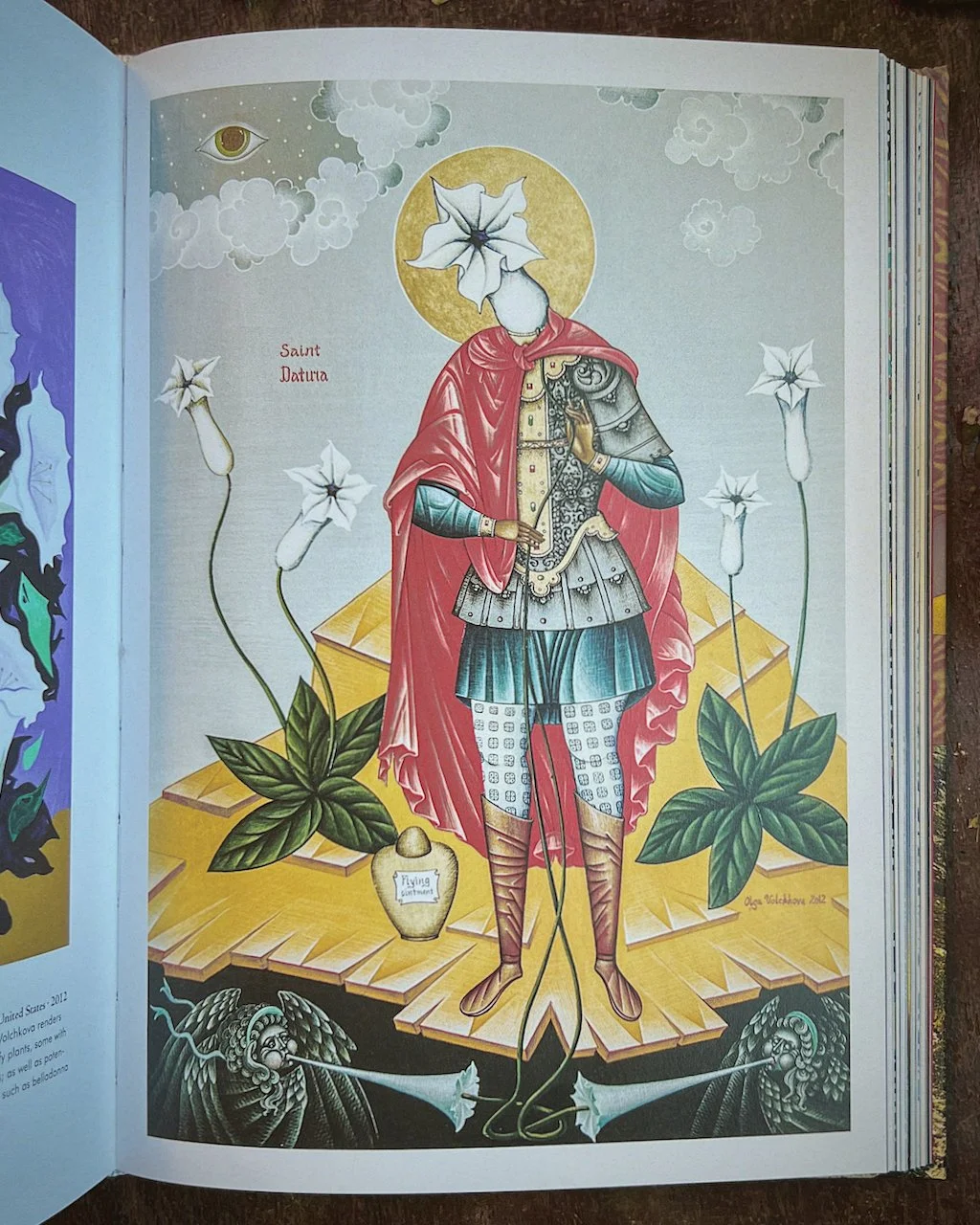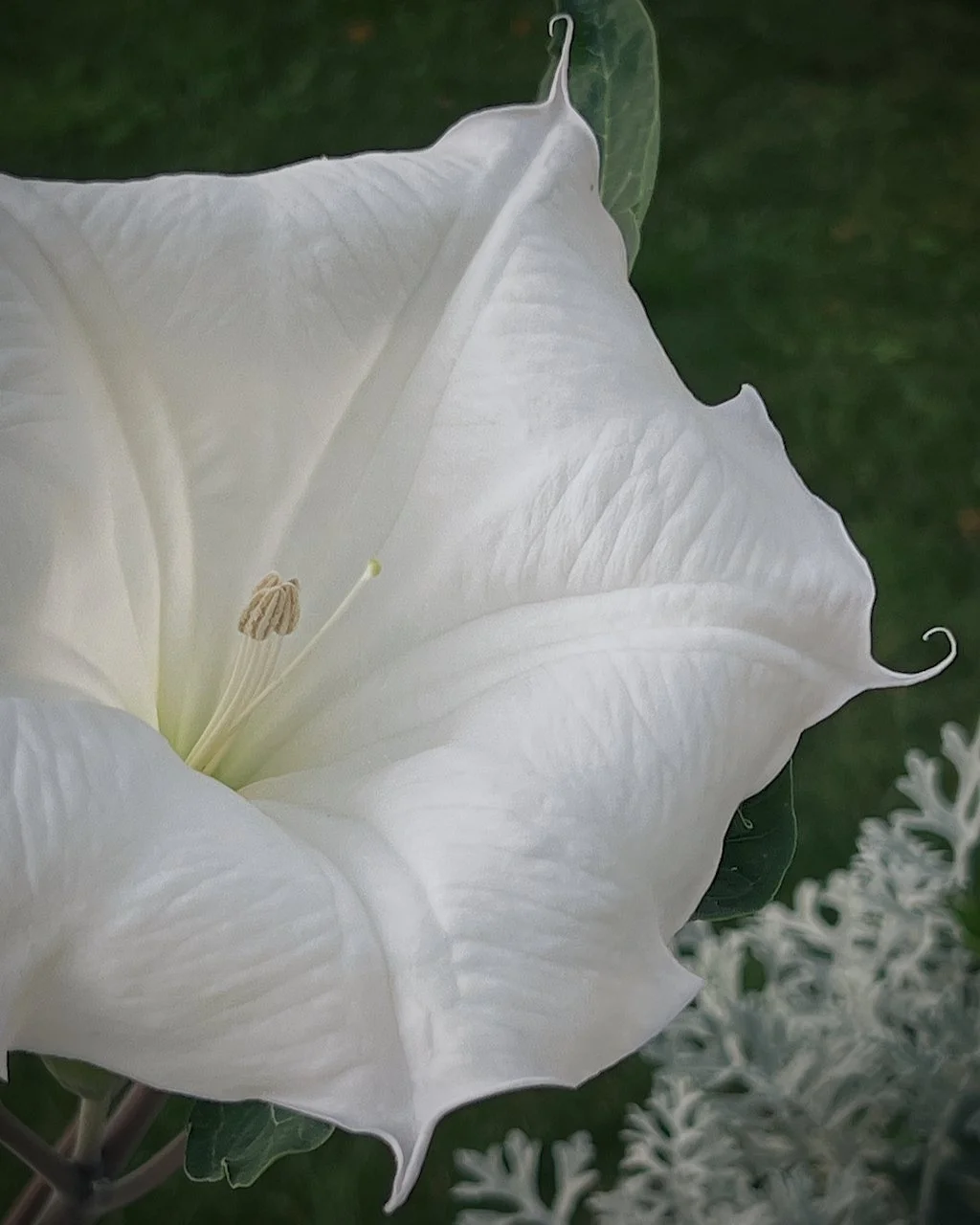Datura
The star of our garden this summer was probably my datura. It’s been so fun to witness the cycle over the course of the season, especially since she’s so closely tuned to the moon. 🌝
If you aren’t familiar with datura, the first thing to know is that it’s a member of the nightshade family, aka a “witch’s weed,” and extremely poisonous. Similarly, some datura species have been used traditionally and shamanically as hallucinogens and deliriants throughout history. In Western culture, it was a prominent ingredient in flying ointments and therefore unlucky to grow during the colonial period of witch hysteria.
It must not be ingested in any way and should be handled carefully. (Keep this in mind when planting in proximity to kids and animals.)
In folk magic, datura is known as devil’s apple, ghost flower, madherb, sorcerer’s herb, and witch’s thimble. It has a special, powerful ability to break spells.
The seeds are produced in large, awesome, extremely spiky capsules that eventually split. They do well outside and in containers and prefer sunny places that’ll keep their roots dry. They’ve flourished even in our poor soil.
I’m also lucky that aside from the glorious, oversized flowers, I’m being blessed with pod upon pod packed with moonflower seeds. They’ve been a joy to harvest and share.🪴
“Saint Datura” art by Olga Volchkova, featured in Taschen’s “Plant Magick” collection.
To learn more about me and my Appalachian folk practice, including info on folk witchcraft, mountain magic, and hearthcraft, please visit gritchenwitch.com or join my Patreon at patreon.com/gritchenwitch.
Follow: Instagram | Threads | TikTok | Facebook | Shop | Etsy | Patreon

